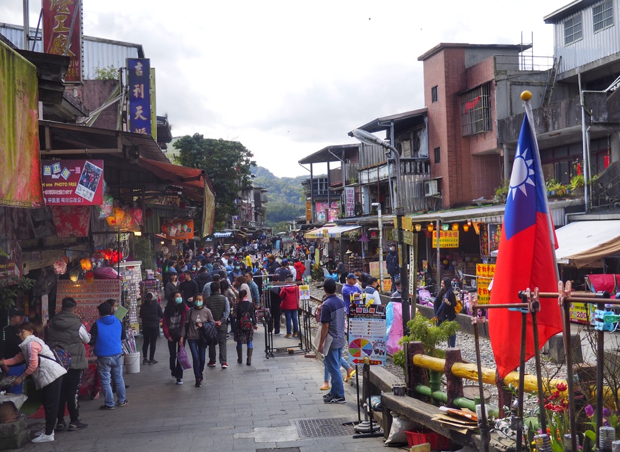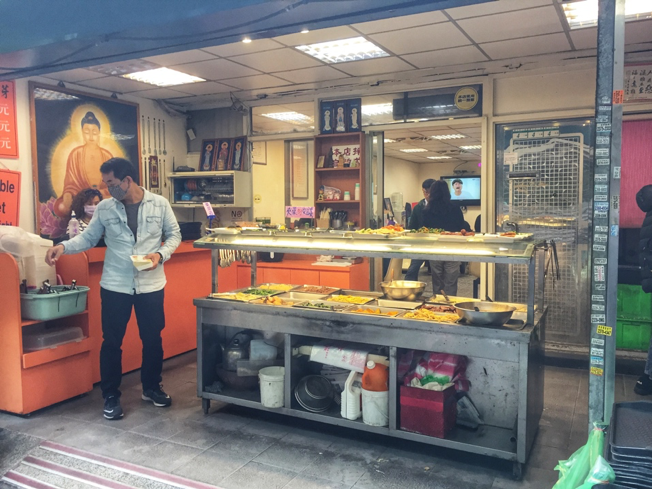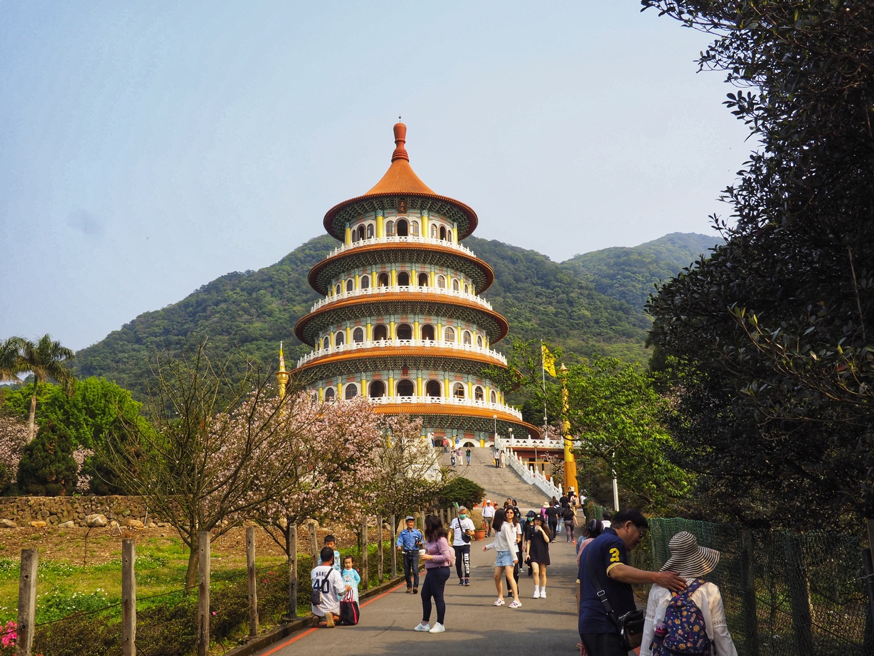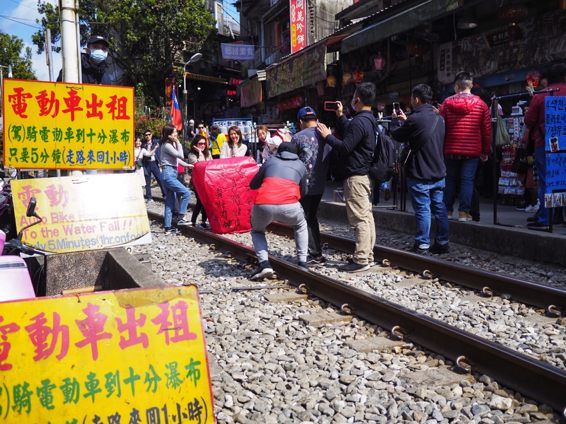Dr. Grace Allen is a lecturer in the School of Humanities and Social Sciences at the Chinese University of Hong Kong, Shenzhen.
On January 22nd, my partner was traveling from China to the U.S., and news about a “novel” virus spreading from Wuhan was just breaking. It was the start of our three week Chinese New Year holiday, and we planned to travel to the mountainous region of Yunnan in the Southwest after he returned to China in a few days. It’s strange re-reading our WeChat messages from that period, as we struggled to parse out the severity of the situation based on wild rumors and snatches of news. At the beginning of his trip, I asked him if the Shenzhen airport had taken “any extra precautions due to the flu.” He reported that the lines were long due to the holiday rush, but otherwise everything seemed normal.
Less than twenty-four hours after I received that text, the Chinese government suddenly announced the unprecedented lockdown of Wuhan and then the entirety of Hubei province. Signs that the virus was spreading in Shenzhen also began to multiply. The university closed off our campus to non-residents and discouraged us from leaving frequently. If we did go out we had to have our temperature checked before entering any store or restaurant, and again when we returned to campus. I worried about what might happen if the thermometer displayed a high reading and I had to navigate a hospital with my very limited Chinese. I also worried about how the new restrictions on entering and exiting Shenzhen’s myriad housing communities and urban villages would impact “ayi,” the maid who came to clean our house once a week, and Chen, our driver and friend, not to mention the millions of other contingent workers who keep the Chinese economy humming.
On January 25th, as my partner made his way back to China, I asked him to buy some medical masks before his connecting flight in the Seoul airport because “basically everyone” in Shenzhen was wearing one, and they were becoming increasingly difficult to find.
Several hours later, while he was in flight, I forwarded him a message from our hotel in Yunnan. Activities were going to be shut down in the entire region, it explained, but for now the hotel would remain open. I suggested that we play things by ear but still plan to go. The idea of shutting down tourists activities throughout China when few instances of the virus had been reported beyond Hubei still seemed absurd to me at the time. “We’d still be able to walk around outside a bit and relax in a different setting,” I reasoned, optimistically.
Later that afternoon, I sent another text: “So, we’re going to have to cancel our trip.” The hotel had decided to close after all, and news about the virus’s spread was worsening by the hour.
After his return, we considered our options. How much was the government telling us? What if the border between Shenzhen and Hong Kong was closed, or the entire mainland was shut down with as little forewarning as the Hubei lockdown? The U.S. state department sent out increasingly dire warnings encouraging Americans to return home while we still had the chance. We decided that our best option was to book a flight to Taipei and watch things unfold in the mainland from a safe distance, planning to return to Shenzhen once things calmed down.

We were lucky. We arrived in Taiwan just days before it closed its borders to China and then to the rest of the world. Excluded by the WHO, and cautious after its brush with SARS, Taiwan formulated its own robust epidemic response plan, including extensive testing and tracking, which was remarkably successful at stemming the initial spread of the virus. Besides the government’s recommendation to wear medical masks (they’re only required in the metro), and temperature checks in some stores, Taipei was, and has remained, shockingly normal. Businesses have stayed open throughout the pandemic, and there has been little evidence of social distancing. Every day I walk down the street to eat lunch at a vegetarian Buddhist buffet before returning to my Airbnb to record a lecture or hold a discussion section on Zoom. On the weekends, following the lead of the locals, we’ve escaped the city center to tour the villages along the coast and see the cherry blossom in bloom.


In early March, after weeks glued to our phones watching “the curve” steadily rise, peak, and then finally flatten in China, we booked a return flight. Our friends reported that stores were gradually reopening, and Shenzheners were returning from their family homes up North without triggering a second outbreak. However, on the eve of our departure, as the epidemic evolved into a pandemic, we received an anxiety-provoking email from our university detailing an ambiguous two-week quarantine procedure (possibly in a “government facility”) for anyone entering the mainland. We canceled our flight, and by the end of the month China had closed its borders completely to non-citizens. Ironically, we left the mainland to avoid getting infected or trapped there, but now we’re perceived as the threat, and “trapped” on the outside. Just a two-hour flight away, it is still uncertain if it will be weeks or months before we can go back to our apartment in Shenzhen.
Since our students never returned from the New Year’s holiday, our entire semester has taken place online. My students have had to adapt to synchronous teaching despite cramped living conditions in quarantined cities and unstable internet connections. And for the most part, they have adapted, and in ways that often astound me. One experience stands out. An Indonesian student in one of my courses was leading our class discussion on Zoom, but his internet connection was choppy. He told me to hold on briefly while he found a solution. Less than five minutes later he popped up on the screen again, slightly out of breath, and in another student’s living room! It turned out that he and the other student were next-door neighbors in Jakarta, and he had dashed over to her house to continue class from there. (I checked some details with this student when I was writing this post, and he mentioned that that day, March 13, was the last time that he left his home. Since then the outbreak in Jakarta has significantly worsened.)
When Chinese universities will return to face-to-face instruction still remains uncertain. Our university recently announced that it will continue online teaching through the summer session, although graduating seniors must return to campus to take some of their final exams in a supervised classroom. This includes seniors from Hubei Provence who must quarantine in a hotel for two weeks and take two COVID-19 tests before they’ll be allowed into the examination room. The rest of the students will have to wait until August (when it’s presumed the university will re-open) to finish some of their spring semester finals. I assume that China will allow foreign teachers and students to return by the fall if the pandemic is under control by then, and I’m trying to avoid thinking about what will happen if we’re not.
With my attention focused on adapting to online teaching, and conferences postponed or canceled, my research has mostly fallen by the wayside. But before the outbreak started I was slowly sifting through new research gathered in Paris last summer about the French luxury industry’s postwar efforts to expand into foreign markets. Post-COVID, as multinational industries become painfully aware of some of the drawbacks of global interdependency, I wonder what the future will hold for the luxury industry, which has become particularly dependent on Chinese labor and consumption over the past ten years.
Mostly, however, I’ve been reading and thinking about pandemics past, and pondering the strange vicissitudes of historical memory that have led the Spanish Flu to be left off of the syllabi of so many world history courses, including my own. I won’t make that mistake again, even it requires cutting back on my World War I material. Exploring how different societies responded to the Spanish Flu strikes me as an equally powerful way to encourage students to reflect on historical contingency. What kind of leadership, cultural practices, and political and social structures spared some countries, cities, and communities from infection, while others were completely devastated, often despite close proximity to each other? I found Laura Spinney’s book, The Pale Rider: The Spanish Flu of 1918 and How It Changed the World, a particularly fascinating read when it came to these questions. She discusses, for example, why the death rate among Italian-Americans was disproportionally high in the U.S., and how American Samoa completely escaped the outbreak, while it devastated the indigenous population of neighboring Western Samoa.
A similar drama is playing out today, with COVID-19 shining a particularly unforgiving light on my home country. Taiwan continues to ride out the pandemic remarkably unscathed. Meanwhile, I have followed the news from the U.S. with mounting horror as the lack of a coherent centralized strategy has led to a fragmented state-by-state response and ballooning infections. For the moment, I feel much safer in Taiwan, which boasts a universal health care system and provides affordable treatment even to uninsured foreigners like myself. My partner was easily able to buy his prescription medication here for less money than the same drug cost him in the U.S., even with a good health insurance plan. The Taiwanese government has also generously extended our tourist visas twice since we’ve arrived, while my own country continues to use the crisis as an excuse to devise new ways to expel non-citizens.



